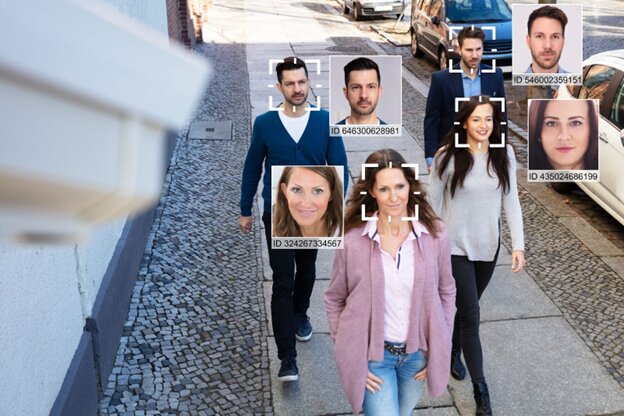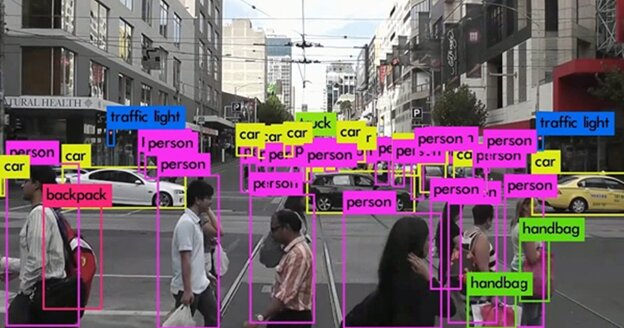10 Image Processing Projects for Beginners and Experts
If you are a beginner or an expert in the field of image processing then want to work on projects. But you are getting ideas that which type of projects you should work on. Then this article will serve you exciting project ideas.
Image processing is a fascinating field with a wide range of projects suitable for both beginners and experts. Here are some exciting image processing projects beginners and experts that cater to different skill levels:
Table of contents
Best-suited IT & Software courses for you
Learn IT & Software with these high-rated online courses
For beginners
1. Gray scaling imaging
Gray scaling is one of the most commonly used preprocessing techniques because it can reduce dimensionality and computational complexity. This process is almost essential even for more complex algorithms such as optical character recognition, and companies such as Microsoft have developed and implemented entire products based on it (such as Microsoft OCR).OpenCV, MATLAB, and other popular image processing tools have many functions to implement grayscale algorithms. In this image processing project, you can use the Pillow library to import a selection of colour images and use NumPy to transform the array.
Take Away from the project
- Preprocessing techniques, such as grayscale conversion, play a crucial role in preparing images for further analysis and computational tasks.
- Popular image processing libraries like OpenCV, MATLAB, and Pillow offer a range of functions and methods to implement grayscale algorithms.
- The project demonstrates how to import color images using the Pillow library and convert them to grayscale using NumPy.
2. Image Filtering
Implement basic image filtering techniques such as blurring, sharpening, or edge detection. You can start with simple filters like the average filter or the Sobel operator and gradually explore more advanced techniques. Another common filter is edge detection, which highlights the boundaries between different objects in an image. Techniques like the Sobel operator can be used to detect edges.
Take Away from the project
- Gain an understanding of basic image filters like blurring and edge detection.
- Learn how to modify pixel values to achieve specific visual effects.
- Explore techniques such as the Sobel operator to detect edges in images.



Also explore: Image Processing Online Courses & Certifications
3. Image Histogram Equalization
Histogram equalization is a technique used to enhance the contrast of an image. The histogram of an image represents the distribution of pixel intensities. By redistributing the intensities, you can make the image more visually appealing. The process involves mapping the original histogram to a new histogram with a more uniform distribution. Develop an algorithm to enhance the contrast of an image by redistributing the pixel intensities using histogram equalization.
Take Away from the project
- Understand the concept of histograms and their role in image enhancement.
- Learn how to redistribute pixel intensities to improve contrast in images.
- Gain insights into histogram equalization algorithms and their impact on image appearance.
4. Face Detection
Build a face detection system to detect and highlight human faces in an image. You can use libraries like OpenCV, which provide pre-trained models for face detection or explore more advanced methods such as Haar cascades or deep learning-based face detectors.
Take Away from the project
- Learn about the importance of face detection in various applications.
- Understand different face detection methods like Haar cascades and deep learning approaches.
- Gain practical experience in detecting and highlighting human faces in images.
5. Image Stitching
Implement an image stitching algorithm combining multiple overlapping images into a larger panoramic image. This project will introduce you to feature detection and matching techniques, such as SIFT or SURF, and homography estimation.
Take Away from the project
- Understand the process of combining multiple images into a panoramic view.
- Learn about feature detection algorithms like SIFT or SURF for identifying corresponding features.
- Explore techniques like homography estimation for aligning and blending overlapping regions.
For experts
6. Image Segmentation
It involves creating algorithms that can accurately segment different objects, such as pedestrians, vehicles, road signs and other obstacles, from images captured by autonomous vehicles. This project could use deep learning techniques like convolutional neural networks (CNNs) and semantic segmentation to identify these objects from the image data. This project aims to create a system that can reliably detect various objects in real time while driving autonomously through challenging environments with varying lighting conditions or weather patterns.
Take Away from the project
- Gain experience in accurately segmenting objects from images, particularly in the context of autonomous vehicles.
- Understand deep learning techniques like CNNs and semantic segmentation for object identification.
- Aim to develop a real-time object detection system that performs reliably in challenging environments.
7. Facial Emotion Recognition
Once the basic object detection has been established, further research could be done on recognizing more complex behaviours, such as facial expressions or body language, when interacting with humans on roadsides or intersections where pedestrian safety is paramount for successful autonomous navigation systems.
Take Away from the project
- Extend object detection capabilities to recognize complex behaviours like facial expressions and body language.
- Explore research on how facial emotion recognition can contribute to safer interactions between autonomous vehicles and pedestrians.
- Focus on improving pedestrian safety and enhancing the overall human-vehicle interaction experience.
8.Augmented reality filters
Take Away from the project
- Utilize computer vision techniques like face detection and tracking to overlay virtual effects onto live camera feeds.
- Enhance drivers’ situational awareness without distracting them from the road ahead.
- Emphasize the importance of real-time processing and accurate object tracking to implement augmented reality filters effectively.
Also read: Augmented Reality Online Courses & Certifications
9. Real-Time Object Detection and Tracking
Real-time object detection and tracking is a rapidly growing research field with many potential applications. This project involves developing a system that detects and tracks objects from a video feed in real-time. To achieve this, advanced techniques such as deep learning and convolutional neural networks (CNNs) are used for accurate object detection. CNNs use multiple layers to extract features from an image or video frame, which can then be used to recognize different objects within the scene. Additionally, these models have been trained on large datasets, allowing them to identify even small objects with high precision accuracy rates accurately.
Take Away from the project
- Gain expertise in real-time object detection and tracking from video feeds.
- Explore advanced techniques such as deep learning and CNNs for accurate and efficient object recognition.
- Develop a system capable of accurately detecting and tracking objects in dynamic environments.
10. Image Super-Resolution
Enhancing the resolution and quality of low-resolution images is a challenging task. Still, deep learning-based approaches, particularly using generative adversarial networks (GANs), have shown promising results in this domain. GANs consist of generator and discriminator networks that produce realistic and high-resolution images.
Take Away from the project
- Learn about enhancing the resolution and quality of low-resolution images using deep learning, particularly GANs.
- Understand the architecture and principles behind GANs and how they can generate high-resolution images.
- Aim to produce visually appealing and realistic super-resolved images.
Conclusion
Image processing offers an array of exciting projects for both beginners and experts alike. From artistic style transfer to advanced object tracking and segmentation, there are endless opportunities to learn and innovate. Whether you are just starting or have years of experience, these projects allow you to enhance your skills, explore cutting-edge techniques, and contribute to the rapidly evolving field of image processing. So, pick a project according to your interest, dive in, and unlock the amazing image processing possibilities!
This is a collection of insightful articles from domain experts in the fields of Cloud Computing, DevOps, AWS, Data Science, Machine Learning, AI, and Natural Language Processing. The range of topics caters to upski... Read Full Bio








